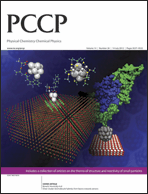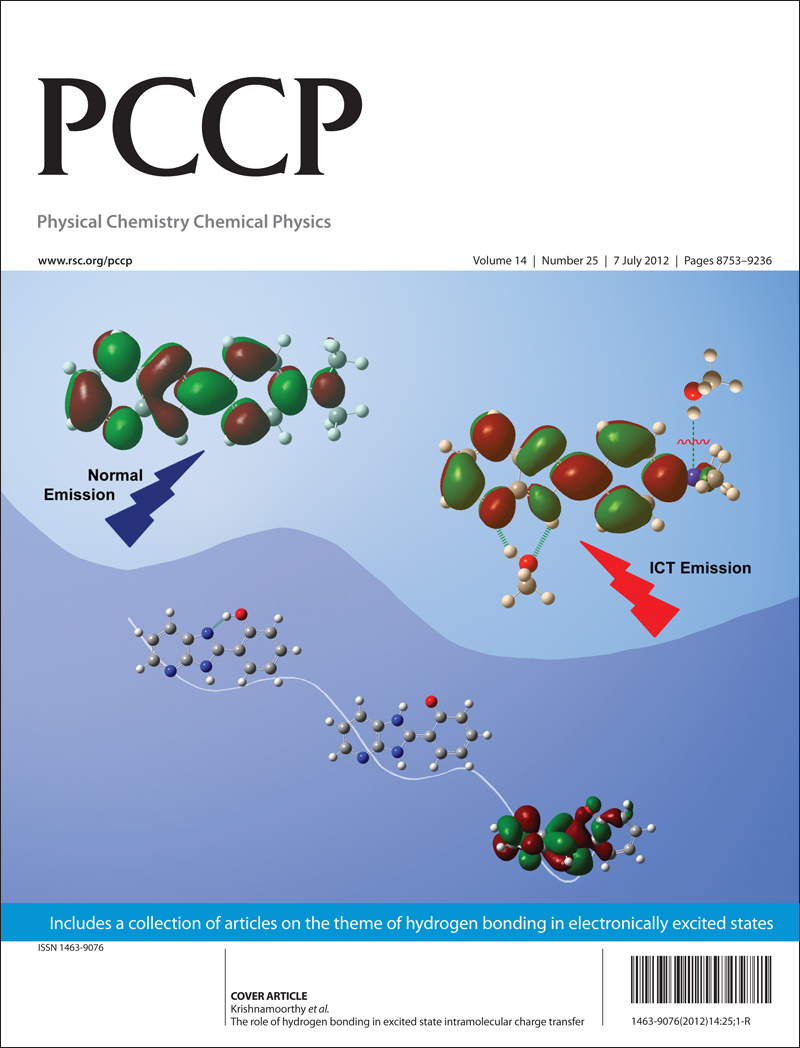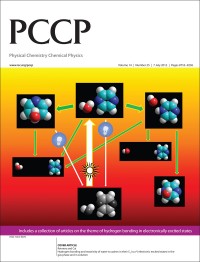This month sees the following articles in PCCP that are in the top ten most accessed in April:
One-step synthesis of a sulfur-impregnated graphene cathode for lithium–sulfur batteries
Min-Sik Park, Ji-Sang Yu, Ki Jae Kim, Goojin Jeong, Jae-Hun Kim, Yong-Nam Jo, Uk Hwang, Shin Kang, Taewoo Woo and Young-Jun Kim
Phys. Chem. Chem. Phys., 2012, 14, 6796-6804
DOI: 10.1039/C2CP40727B
Ultrafast chemical dynamics
Klaas Wynne and Neil T. Hunt
Phys. Chem. Chem. Phys., 2012, 14, 6154-6155
DOI: 10.1039/C2CP90065C
Surface-Enhanced Raman Scattering (SERS) on transition metal and semiconductor nanostructures
Xiaotian Wang, Wensheng Shi, Guangwei She and Lixuan Mu
Phys. Chem. Chem. Phys., 2012, 14, 5891-5901
DOI: 10.1039/C2CP40080D
Hydrate-phobic surfaces: fundamental studies in clathrate hydrate adhesion reduction
J. David Smith, Adam J. Meuler, Harrison L. Bralower, Rama Venkatesan, Sivakumar Subramanian, Robert E. Cohen, Gareth H. McKinley and Kripa K. Varanasi
Phys. Chem. Chem. Phys., 2012, 14, 6013-6020
DOI: 10.1039/C2CP40581D
Solar hydrogen production with semiconductor metal oxides: new directions in experiment and theory
Álvaro Valdés, Jeremie Brillet, Michael Grätzel, Hildur Gudmundsdóttir, Heine A. Hansen, Hannes Jónsson, Peter Klüpfel, Geert-Jan Kroes, Florian Le Formal, Isabela C. Man, Rafael S. Martins, Jens K. Nørskov, Jan Rossmeisl, Kevin Sivula, Aleksandra Vojvodic and Michael Zäch
Phys. Chem. Chem. Phys., 2012, 14, 49-70
DOI: 10.1039/C1CP23212F
Density functional theory for transition metals and transition metal chemistry
Christopher J. Cramer and Donald G. Truhlar
Phys. Chem. Chem. Phys., 2009, 11, 10757-10816
DOI: 10.1039/B907148B
Shape-controlled synthesis of high tap density cathode oxides for lithium ion batteries
Anmin Cao and Arumugam Manthiram
Phys. Chem. Chem. Phys., 2012, 14, 6724-6728
DOI: 10.1039/C2CP40209B
Role of complex defects in photocatalytic activities of nitrogen-doped anatase TiO2
Naoto Umezawa and Jinhua Ye
Phys. Chem. Chem. Phys., 2012, 14, 5924-5934
DOI: 10.1039/C2CP24010F
Cost-effective dye-sensitized solar cells consisting of two metal foils instead of transparent conductive oxide glass
Ho-Gyeong Yun, Myoung Kim, Man Gu Kang and In-Hwan Lee
Phys. Chem. Chem. Phys., 2012, 14, 6448-6451
DOI: 10.1039/C2CP40205J
Carbon materials for supercapacitor application
Elzbieta Frackowiak
Phys. Chem. Chem. Phys., 2007, 9, 1774-1785
DOI: 10.1039/B618139M
Why not take a look at the articles today and blog your thoughts and comments below.
Fancy submitting an article to PCCP? Then why not submit to us today!
Comments Off on Top 10 most-read PCCP articles in April
















